Hi, I’m James. Thanks for checking out Building Momentum: a newsletter to help startup founders and marketers accelerate SaaS growth through product marketing.
Positioning is what your company says about itself to the world, and can be the difference between being the hottest, must-have software, or the dullest product on earth.
Your positioning will adapt and evolve to remain relevant and effective – or at least, attempt to do so.
But it’s hard to see this in action. Positioning evolves pretty slowly at any company – in years, rather than months. So, in this example, I’ve taken a look at Zendesk – the customer support platform you all know (and if you’re a user, probably hate).
I’ve stepped back in time over 16 years of Internet Archive snapshots to look at how Zendesk positioned themselves, and see what insights we can glean about changes to their target customer, value proposition, frame of reference, and market trends.
In this post:
But first, when should positioning evolve?
From my previous post on when you should consider repositioning, I called out the following:
- Product offering has legitimately changed – If you’ve made an acquisition, added a new product line, or developed new capabilities that vastly change the outcomes your customers can achieve, it’s time to refresh.
- New unique, unconventional wisdom unlocked – Unconventional wisdom is a great way to stand out from your competitors, re-educate your customers, and develop a strong sales and marketing narrative that drives urgency and demand.
- Customer patterns and feedback – As you win new customers, your ‘best-fit customer’ will change. As you continue to sell and market and support to them, you’ll learn much more about what’s going on in their minds – new hopes, dreams, and fears that can enable stronger positioning.
- Specific sales funnel challenges – Drops in MQLs or closed won rates can be really great indicators that you need to revisit the way you present your brand to the market.
And they still hold true. Building new product features, introducing new concepts or categories to the market, learning about your next ideal customers, and reacting to challenging sales environments cover nearly every reason you might need to change and adapt your positioning.
Zendesk’s positioning evolution
Zendesk is one of the longest-running ‘real’ SaaS businesses that we can look back almost two decades and see how their positioning, messaging, and value proposition has changed.
So… I’ve gone back over the last 16 years, and taken a screenshot of their website homepage hero section. This is the digital version of cutting a tree trunk and learning how old it is and how the conditions have changed each year.
Only in this case, we’re able to understand how Zendesk thought about:
- Their target customers
- Their value proposition
- The frame of reference they use
- Trends affecting the market
You can scroll down to the bottom of this post to see screenshots each year with a brief commentary. But first, let’s take a look at how it’s changed:
| Year | Target customer | Value proposition | Frame of reference | Trends |
| 2007 | Agile IT organizations | Help desk reinvented | Help desk system | Move to Web 2.0 applications |
| 2008 | IT | Tender Loving Customer Care. | Help desk | Web 2.0 – on-demand customer support |
| 2009 | Any company, large or small | Better Customer Care. | On-demand support tool | as above |
| 2010 | as above | Reinventing how companies support and engage customers | Help desk | Customer love, any time, any place, beyond SaaS |
| 2011 | The fastest way to great customer support | Web-based help desk software | as above | |
| 2012 | as above | Multi-channel customer service software | Powerful yet simple | |
| 2013 | Customer satisfaction has never been easier | Beautifully simple customer service software | as above | |
| 2014 | Focus on your relationships. Be better at customer service. | as above | Customer relationships | |
| 2015 | Zendesk brings companies and their customers closer together | Software for better customer service | Getting personal | |
| 2016 | Businesses are made of relationships… Zendesk helps make them better | as above | Provide a great overall customer experience | |
| 2017 | We can lend a hand | Software for better customer relationships | as above | |
| 2018 | The best customer experiences are built with Zendesk | Customer service and engagement platform | Powerful, flexible, scalability | |
| 2019 | as above | as above | as above | |
| 2020 | Things are changing fast – but you can be faster. | Support, sales, and customer engagement software | Quick to implement, easily scales. | |
| 2021 | Champions of customer service | Zendesk makes customer service better. | Meet customer needs, set team up for success, keep your business in sync | |
| 2022 | as above | as above | as above | |
| 2023 | as above | as above | as above |
What we can learn from Zendesk
Zendesk have been unapologetic to evolve and experiment with positioning over the years, and while we’ll never know the full reasoning or context surrounding their decisions, we’re able to pass some judgement over what has changed – and potentially why.
Target customer: From IT to any company
Zendesk started by targeting agile IT organizations in 2007 but expanded to serve any company, large or small. Very quickly, Zendesk found product/market-fit quickly with a much broader audience, but still kept messaging to appeal to IT user needs throughout.
Value proposition: Reinventing the helpdesk, to the better choice
Straight out of the gate, Zendesk focused on how they were reimagining a boring software category for the new Web 2.0 age. Throughout the years, they’ve played around with several value props including those on speed, customer satisfaction, and – their most famous – “Beautiful customer support software”.
Today, Zendesk have landed on how they help businesses to meet customer needs, set teams up for success, and keep their business in sync.
Frame of reference: From helpdesk to multichannel and more
Unlike many tech darlings, Zendesk didn’t really try to own a frame of reference or create a category. Beginning as a helpdesk (common in the IT world) to ending with customer service software (a much broader framing), Zendesk has always been relatively consistent. Over the years, they’ve adjusted their frame of reference with clarifiers like multi-channel software, beautiful software, powerful platforms, etc.
Market trends: Web 2.0 to speed and scalability
Zendesk has ridden the general waves of B2B tech over the last 16 years. Firstly calling out the Web 2.0 trend of interconnectivity and fun user experiences, to then reiterating the benefits of on-demand (rather than on-premise) software, to gradually evolving as the market moved towards customer support as growth lever through better customer relationships. These can help build urgency and new consideration opportunities, as well as link your positioning to important trends.
Key takeaways
Over 16 years, Zendesk has remained the leader in the industry (not for our lack of trying!) by evolving to reflect changes in the market and customer needs.
Emphasising its core strengths, and staying true to its goal of reinventing the support software industry around the wholesome message of ‘tender loving customer care’ since 2008 is still visible in their tone of voice today. However, the 2013 repositioning as beautifully simple customer service software is probably their most resonant and successful, and still comes up when talking about Zendesk today.
So what can we learn?
- Evolving and broadening your target customer works – once you’re seeing positive shoots of product/market-fit
- Leaning into market trends can help influence your value proposition with the latest cool stuff – and drive new consideration opportunities too
- More than anything, your frame of reference must be from the perspective of your customers – adding clarifiers helps create differentiation here
- As you learn more, you can evolve the value proposition from focusing on features and benefits, to defining the valuable outcomes your customers seek – just don’t take it took far
Zendesk over the years
Below are screenshots from the Zendesk homepage each year according to the Internet Archive.
2007
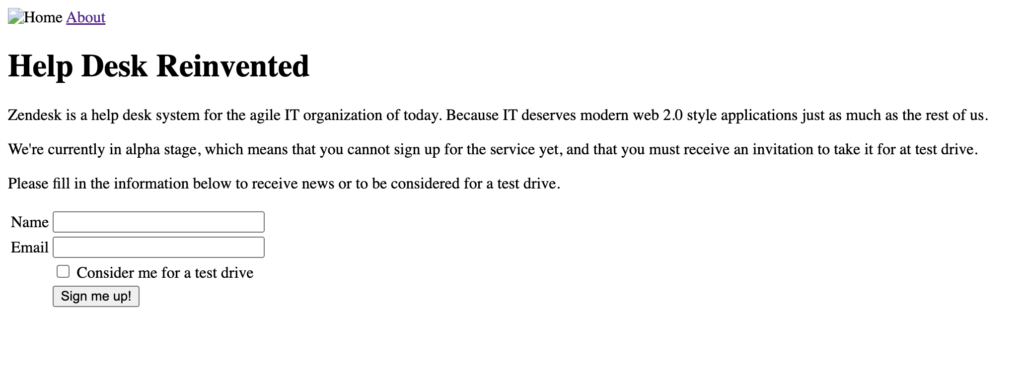
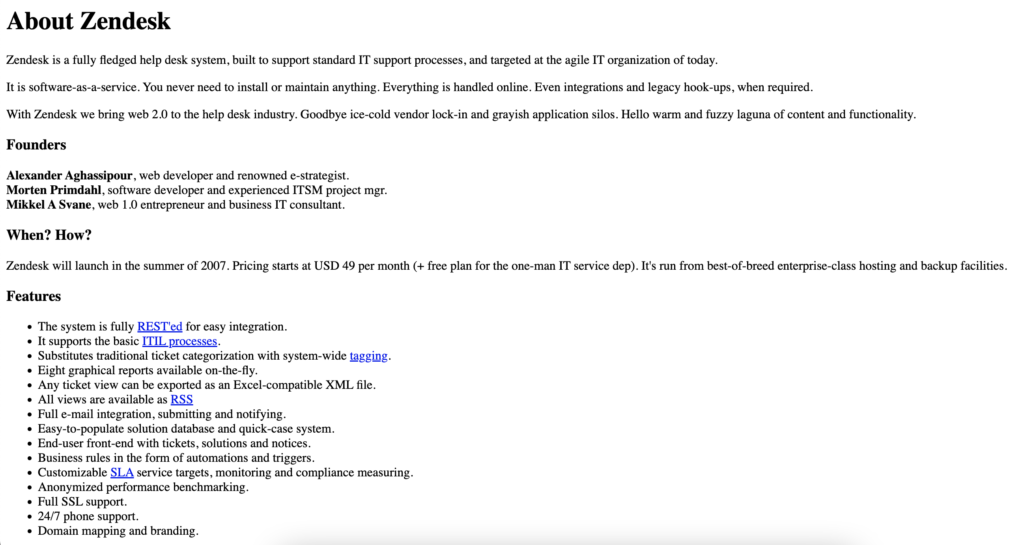
It’s the summer of 2007, and Zendesk is still in pre-launch mode. Their homepage makes it clear their market: IT teams, looking for modern web 2.0 style software, and they’re bold enough to say they’re reinventing the help desk.
I also copied in their about page, adding more color to Zendesk’s IT team origins – but how they see an opportunity by connecting the features that IT teams care about, with the design and user experience they desire.
2008
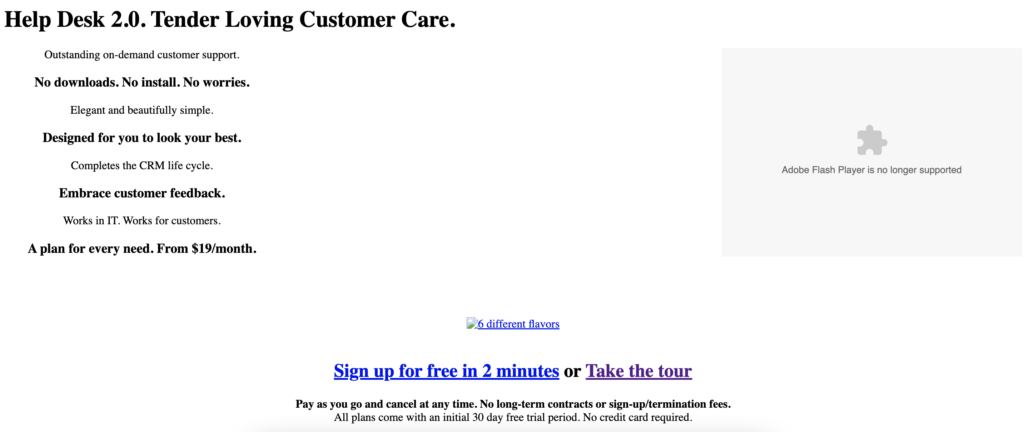
Out of beta and using Flash – but see the language that Zendesk is using? Tender loving customer care – probably at stark odds with messaging from other IT help desk providers at the time.
Their hero section dials up the core benefits – elegant and simple, works for everyone, and no downloads or installs.
2009
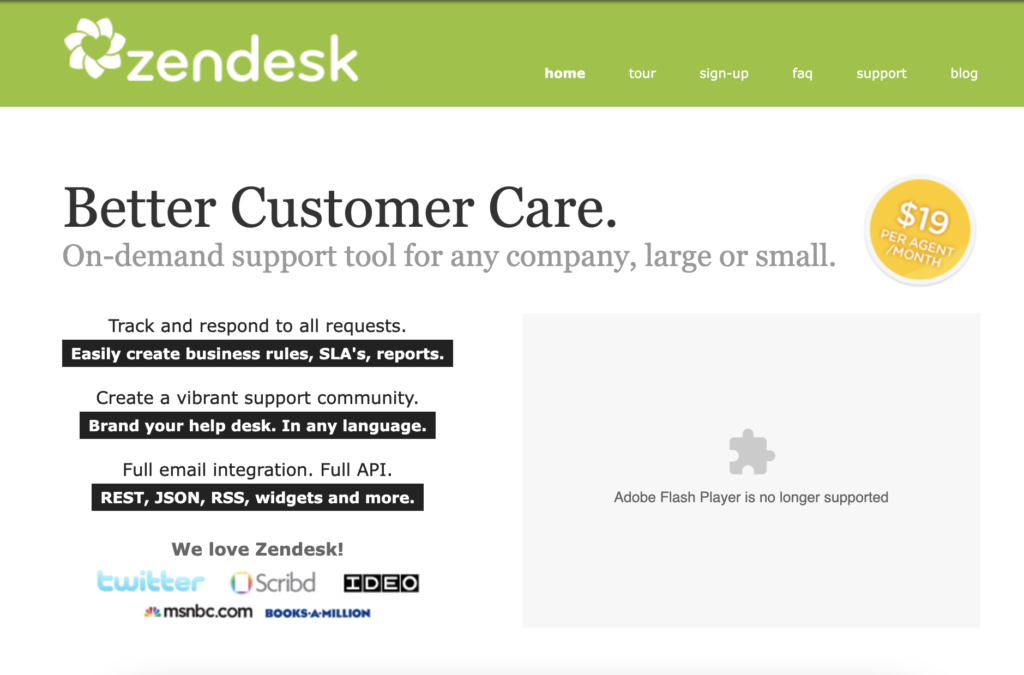
Still using Flash Player, but we’ve now seen Zendesk jump from being for IT teams to being for any company, large and small. For context, 2009 was when Zendesk raised an undisclosed Series A in March, followed by a $6m Series B in August – undoubtedly this is the year that Zendesk knew they had product/market-fit.
Note their messaging still highlights ‘on-demand’ software, as companies were still getting used to SaaS delivery, but the value their customers are looking for is better customer care.
2010
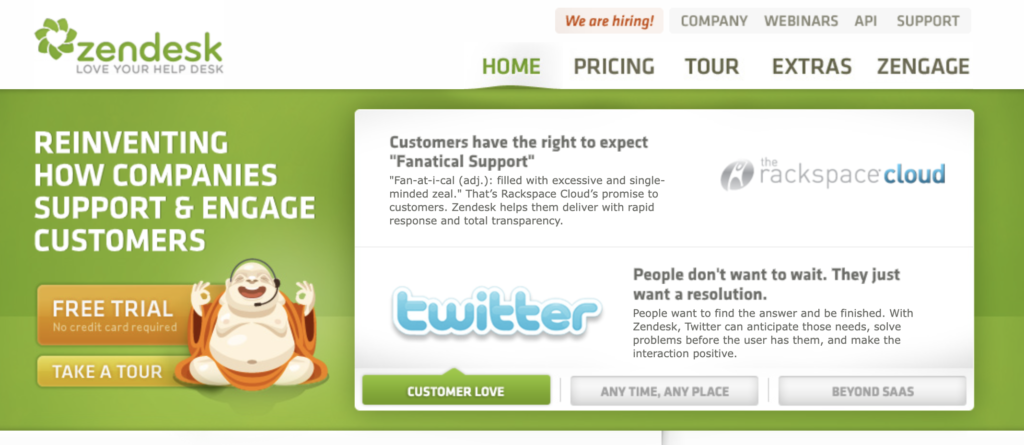
In 2010 we see Zendesk dial back up the ‘reinvention’ angle, not seen since the first pre-launch homepage. Their header also calls out how it can help companies to engage their customers too, while their rotating callouts focus on core benefits like delivering ‘customer love’, being available ‘any time, any place’, and being ‘beyond SaaS’.
2011
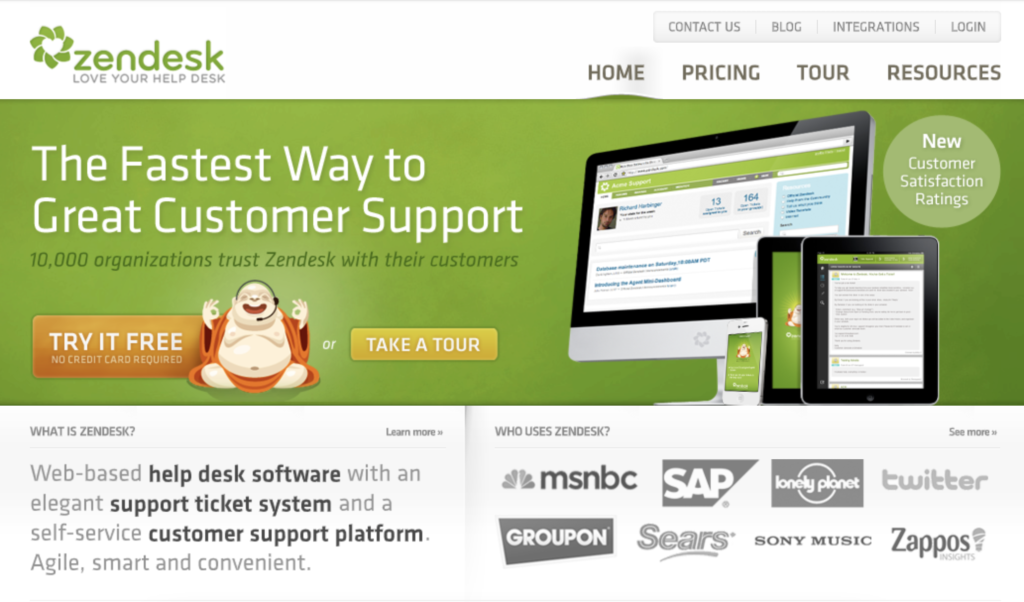
In the December of 2010, Zendesk raise a $19m series C – and get to business. In 2011 they’re claiming 10k+ customers and also do a great job keyword-stuffing their homepage: help desk software, support ticket system, customer support platform.
And we see Zendesk’s messaging become more tangible. Gone is the lofty ‘reinventing’ message – and now it’s just the fastest way to great customer support. Supporting text highlights that Zendesk is agile, smart, and convenient.
2012
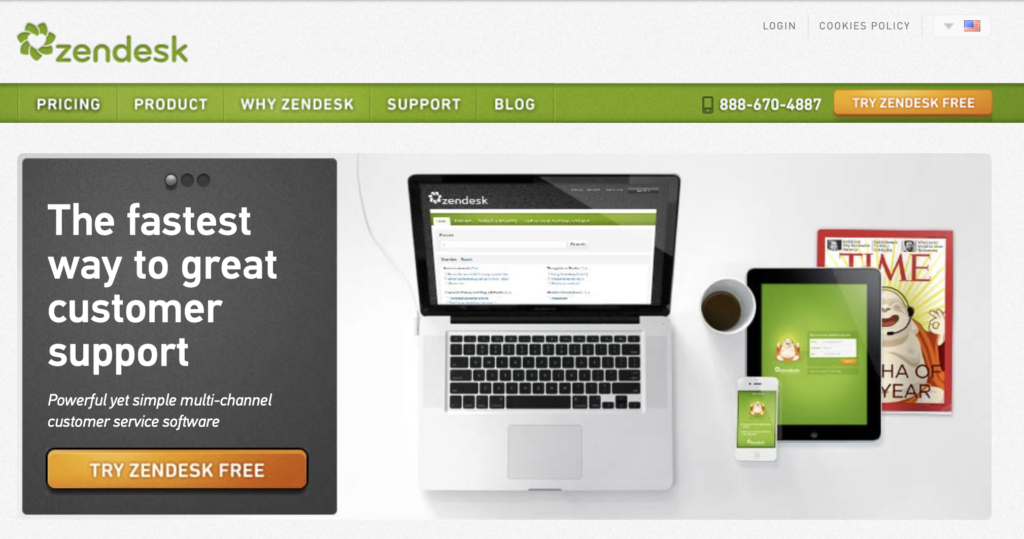
The fastest message continues into 2012 but we now see two new messages on their homepage:
- Powerful, yet simple: Positioning to appeal to their core IT team base, but wanting to reach a wider audience with a focus on simplicity.
- Multi-channel customer service software: Positioning to appeal to businesses pushing the boundaries – multi-channel across email, social, phone, chat, and more.
2013
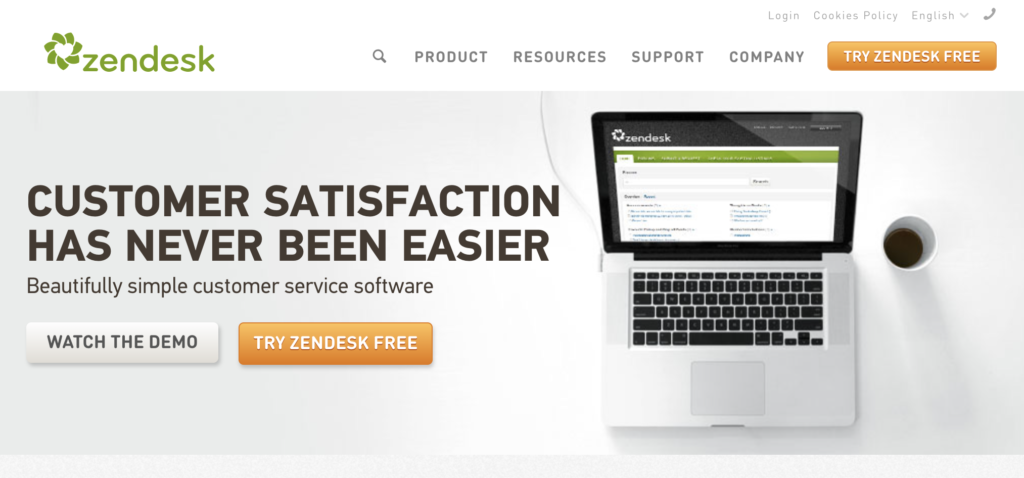
We finally get to the phrase that everyone knows and remembers Zendesk for: beautifully simple customer service software.
We also see a ‘levelling up’ in terms of the overall value and outcome that customers are searching for. Fast customer support isn’t the endgame now – customer satisfaction is the holy grail.
2014
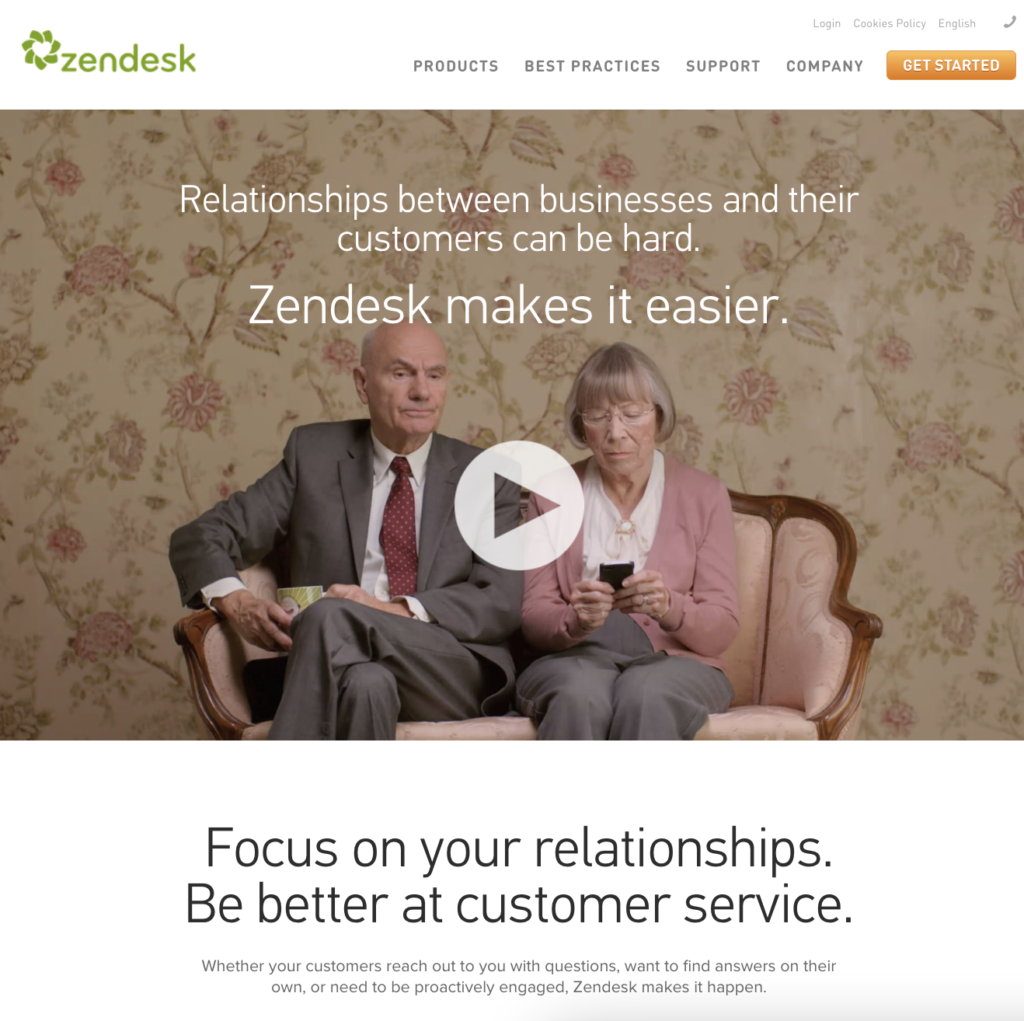
In 2014, Zendesk went public. And I think this homepage is probably an outcome of that, rather than an example of what actually worked well for them at the time.
It’s a good reminder that positioning doesn’t always have to serve your customers – sometimes, it can serve other purposes. In this case, we can speculate that it may have been to tell a story for the retail investor market.
Regardless, Zendesk have levelled up their messaging even higher still, probably to ineffective heights. There’s a lack of tangibility in this core message of ‘being better at customer service’.
2015
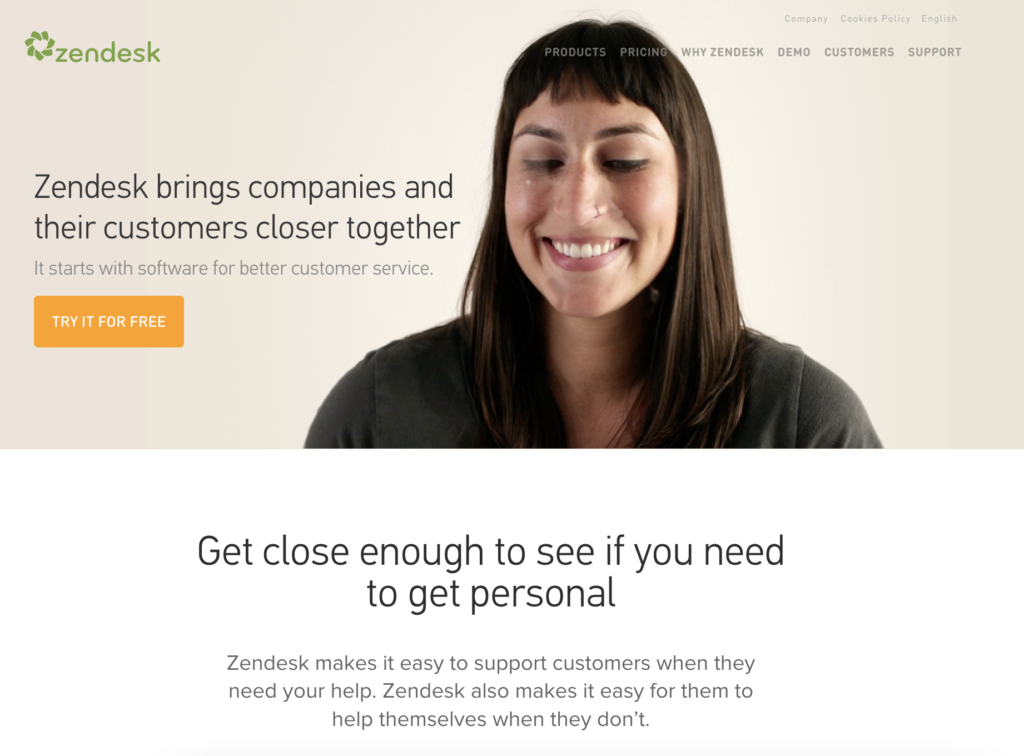
I think 2015 is another year where the brand marketers won the argument. Yes, bringing customers and their customers closer together is a good outcome, but it’s probably not the one that businesses are most motivated to achieve.
We do see an introduction of a frame of reference that makes senes: software for better customer service.
2016
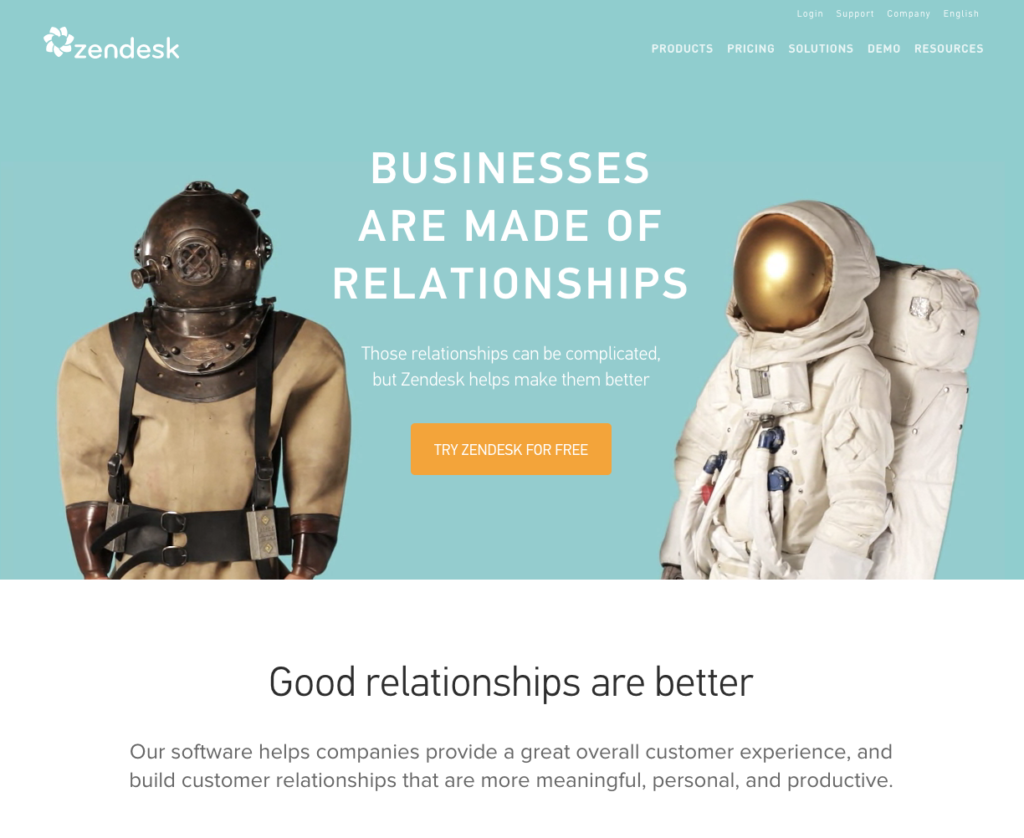
The argument between the PMMs and the brand marketers is tipping ever more in the PMMs favour – but not quite. We see more information in the sub-hero section than we do above the fold.
Zendesk helps companies to provide a great overall customer experience. Aspirational enough? No. But clear.
Building customer relationships that are meaningful, personal, and productive. Tangible enough? No – feels like they’re skirting around the concept that “better customer support means customers spend more money”.
2017
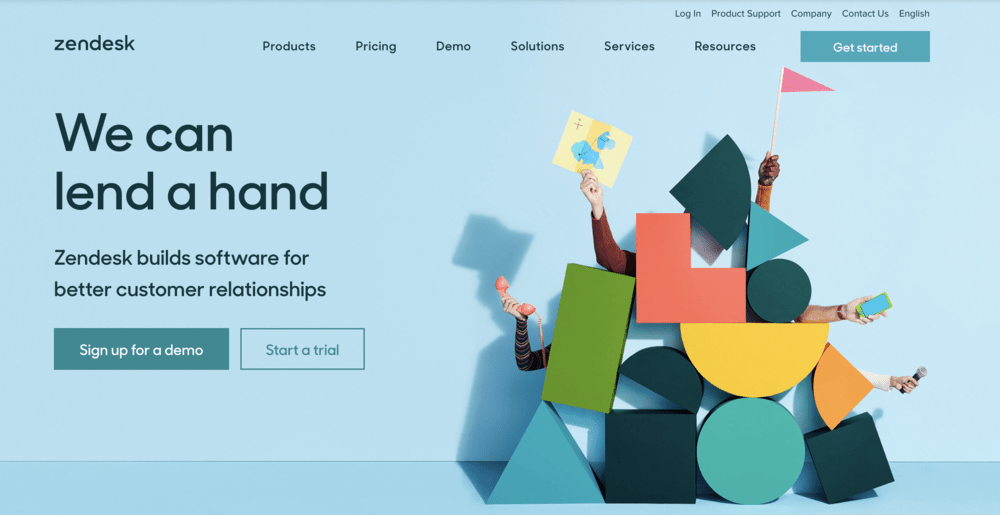
The year of the big Zendesk rebrand, using geometric shapes to denote a whole suite of products. Building software for better relationships, great. Lending a hand? Not so sure.
2018
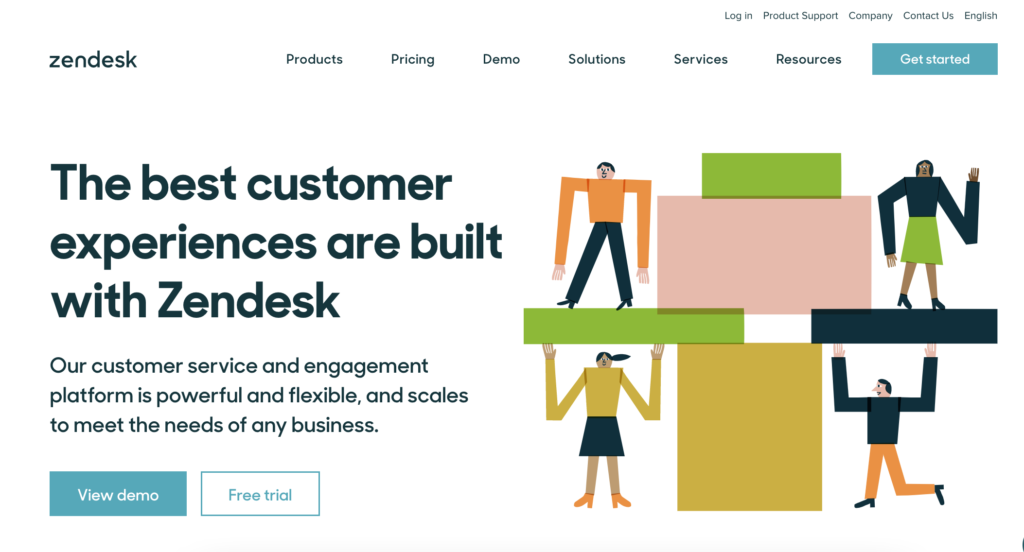
Deliver the best customer experience. Powerful, flexible, scalable customer service and engagement platform. Meeting the needs of any business. Clear, concise, and valuable.
2019
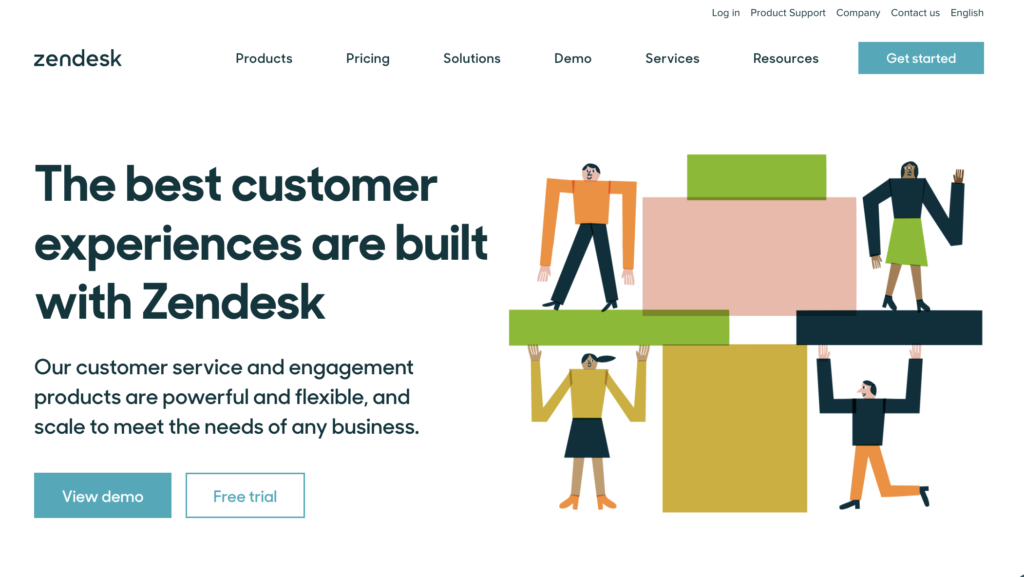
And it seems they found a winner – no changes over a whole year.
2020
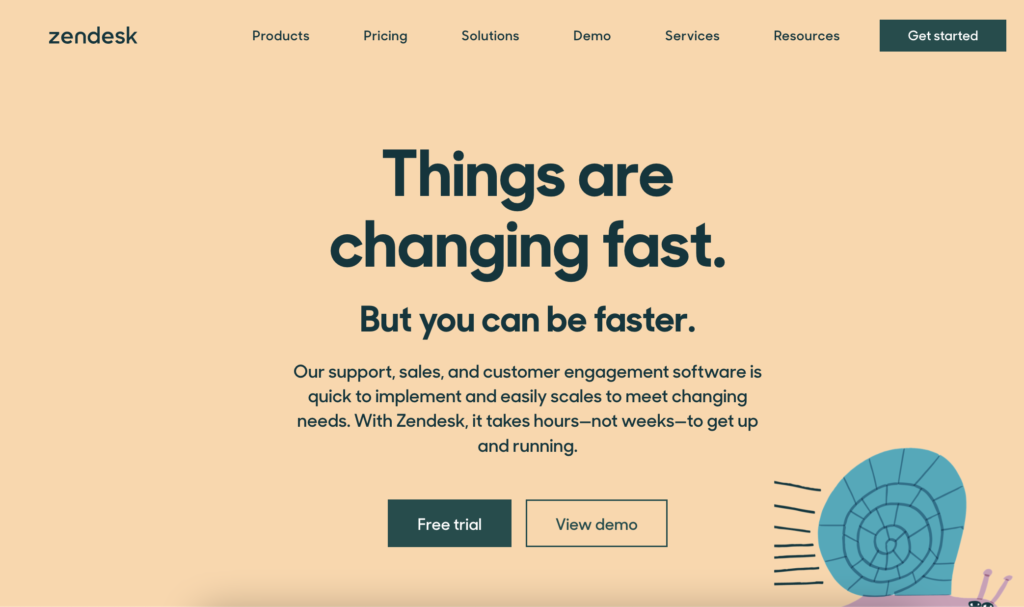
We all know what happened in 2020, and this is a great example of reactive positioning. Scaling up faster than everything else is changing. Speaking to the core needs of getting to get up and running quickly, and flexibility to adapt to any need.
2021
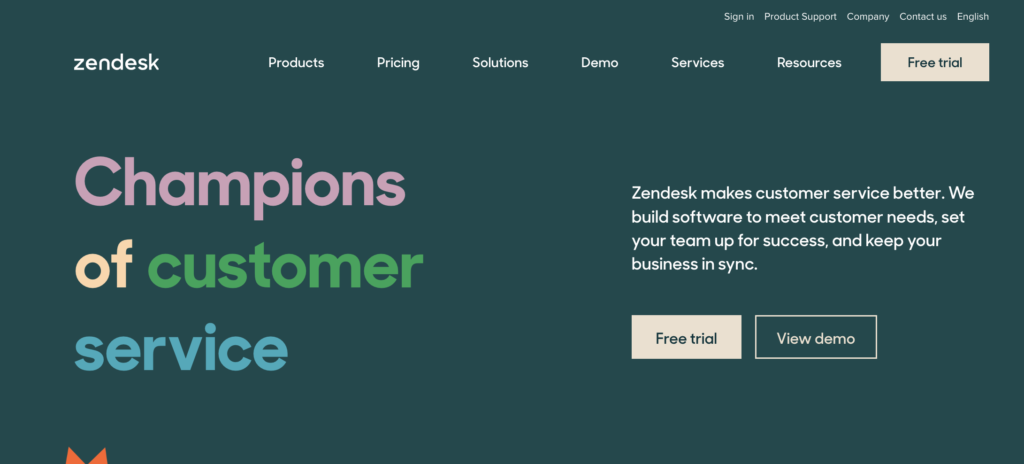
Zendesk makes customer service better. Again, a return of ‘better’ – an ambiguous shapeshifter that can mean anything, to anyone – and probably why they use it. Better could mean more flexible to a support manager, more integrated to an IT person, or easier to use for a support agent.
We see Zendesk highlight the value their product delivers to businesses: meeting customer needs, setting team up for success, and keeping business in sync.
2022
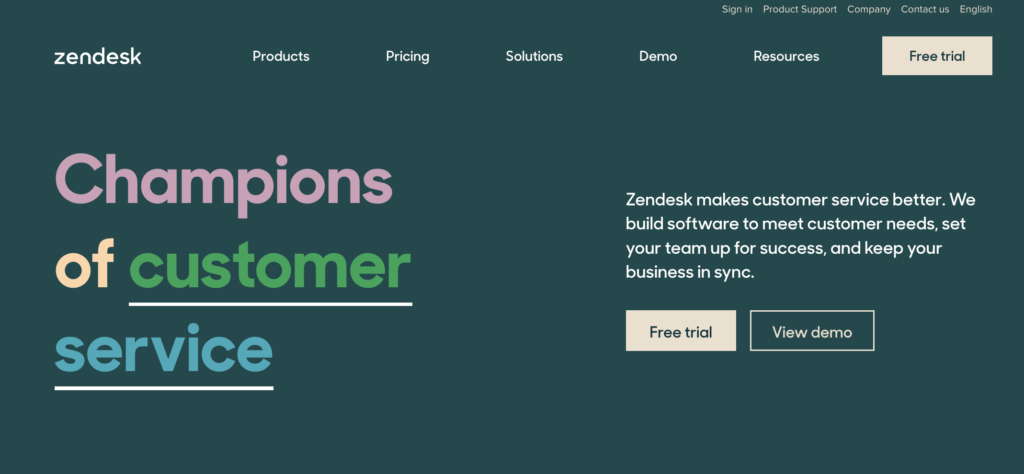
Again, onto another winner? No changes for a whole other year.
2023
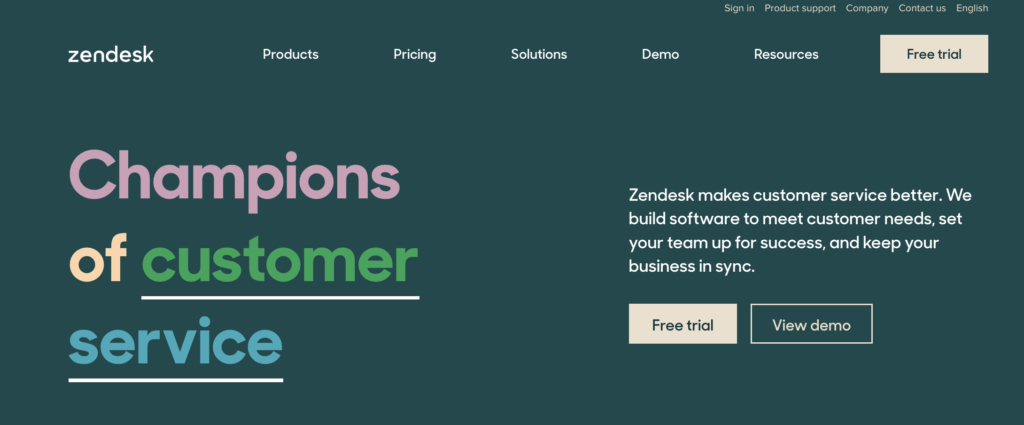
Even today, you’ll see the same hero header on the homepage.
Thanks for reading! Let me know what you thought – find me on Twitter and LinkedIn.
P.S. If you’ve found value in Building Momentum, could you buy me a coffee? Here’s my tip jar – any support is gratefully appreciated!
P.P.S: If you enjoyed this post, will you share Building Momentum with your network?




